As the world progresses towards sustainable development, the use of 3D printing technology in construction is gaining momentum. One such application is the use of 3D printing to construct earthen buildings, which has several advantages over traditional construction methods. Earthen buildings have been used for thousands of years and are known for their durability, low cost, and sustainable nature. 3D printing technology has made it possible to construct earthen buildings with greater precision and speed. This means that a student housing project can be constructed quickly and efficiently, reducing labor costs and overall construction time. One of the significant advantages of earthen buildings is their thermal performance. Earthen buildings are naturally insulated, which means that they maintain a comfortable temperature throughout the year, reducing the need for heating or cooling. This is particularly important for a student housing project, where students need a comfortable living environment to focus on their studies. By strategically placing the building to maximize airflow and block the harsh sun, the building can be naturally ventilated, reducing the need for air conditioning. 3D printed earthen buildings also offer several environmental benefits. Earthen buildings are made from sustainable materials such as clay, sand, and straw, which can be sourced locally, reducing transportation costs and emissions. Additionally, 3D printing technology uses less material than traditional construction methods, reducing waste and environmental impact. In a student housing project, it is important to provide all necessary amenities for students to live comfortably. Earthen buildings can be designed to include all necessary amenities such as bathrooms, kitchens, and common areas. By strategically placing perforations, the building can be designed to maximize natural light, reducing the need for artificial lighting. hey are cost-effective, sustainable, and energy-efficient, making them an ideal choice for environmentally conscious construction. By strategically designing the building for maximum airflow and natural light, students can enjoy a comfortable living environment that is conducive to studying. The use of 3D printing technology in construction is still relatively new, but as it continues to evolve, it has the potential to revolutionize the way we build and live sustainably .
01 /04
SITE
Carrer de Pujades, 88 is a prime location that attracts a significant number of students due to its excellent connectivity and accessibility within the city.
The site is encompassed by a mix of commercial and industrial buildings, alongside a residential block that overlooks a central landscaped area. The fenestrations of the site face towards this focal point.
The site occupies a substantial portion of a Barcelona city block, with roads accessible on all four sides. This excellent connectivity enables easy access to transportation and other amenities, making it an ideal location

02 /04
CASE STUDY
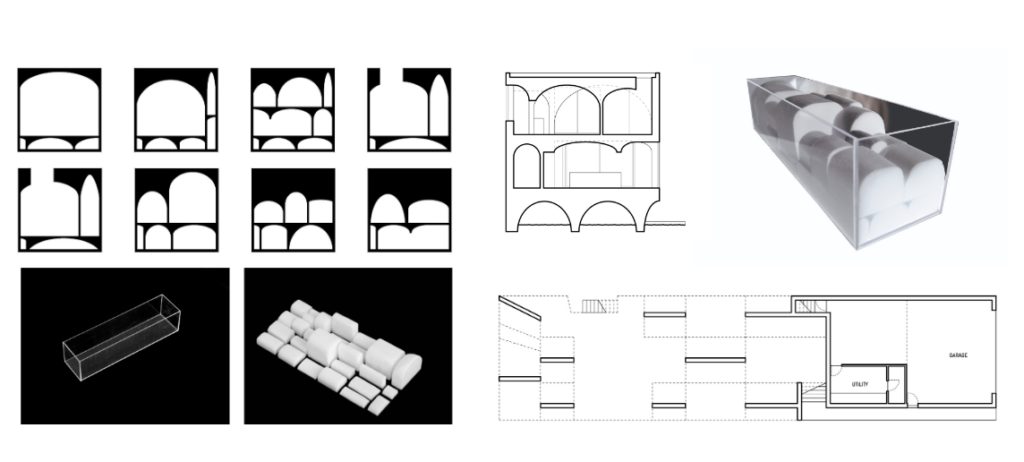
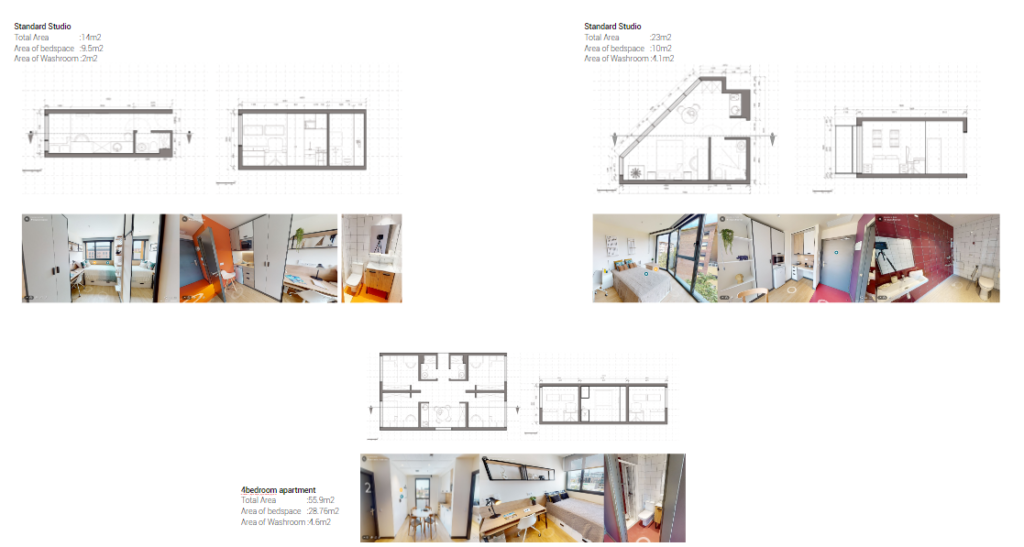
The study of this building offers insights into how to design functional and efficient living spaces for students in urban settings.
The spatial planning and area requirements of Youniq Dorm in Barcelona have been analyzed in the context of the city. Additionally, the study examined how multiple spaces can be combined to form a cohesive entity.
03 /04
TECTONICS
The initial tectonic form that was established during the Competition phase serves as a foundational template that has the potential to be modified and expanded by adjusting its various parameters through iterative processes. This iterative approach enables the proliferation of diverse variations of the original form.
By adjusting the parameters of the geometric features such as the length of the wall curve, arch length, width of the module, and height of the arch, we can create numerous variations that have the potential to fulfill various architectural, spatial, and climatic requirements. This approach allows us to tailor the design to specific contexts and applications, resulting in a diverse range of design solutions.
The subsequent step involves the duplication of a single tectonic module into multiple modules through iterative adjustments of the wall curve, arch length, module width, arch height, and wall angle. These slight variations have the potential to give rise to diverse spatiology applications.
04/04
DESIGN
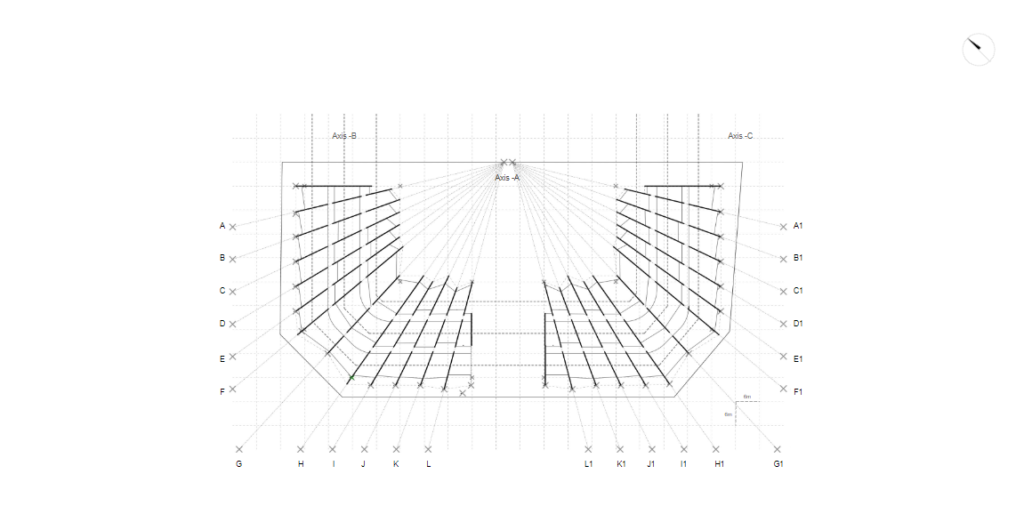
The site has been divided into two parts, and a landscape open space has been created to connect one side of the block to the other. This open space serves as a link between the two parts and provides a visually appealing and functional area for the users. Overall, this planning strategy allows for an organized and efficient use of space while also incorporating aesthetic and functional elements.
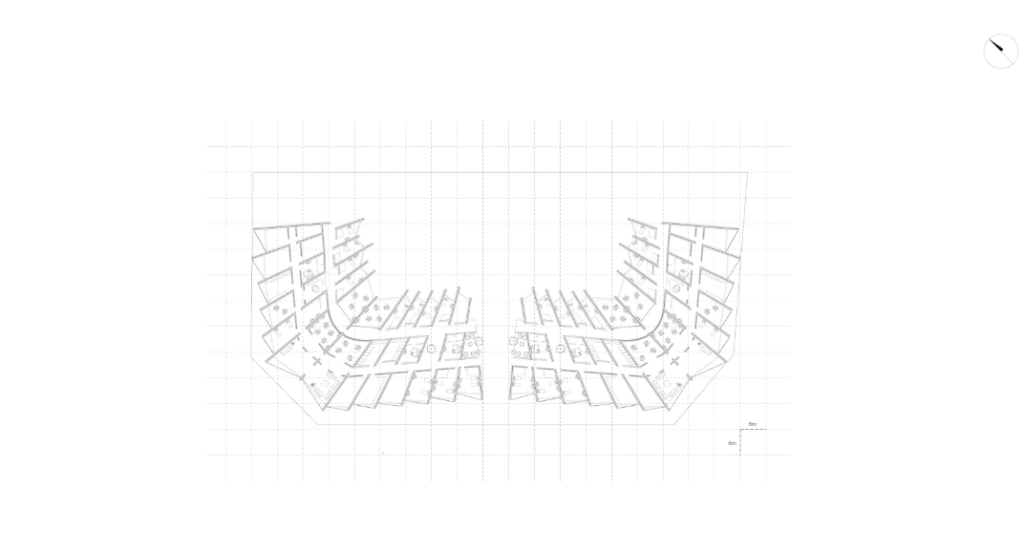
On the ground floor, there will be three clusters of arches with shared spaces located in the central area, all of which will face the central landscape. The common spaces will be situated on the two wings. In order to minimize heat gain during the summer months, the walls on the southwest side will be thicker compared to the walls on the other sides. Overall, this design aims to create a functional and visually appealing space that also takes into consideration the impact of environmental factors on the building’s performance.
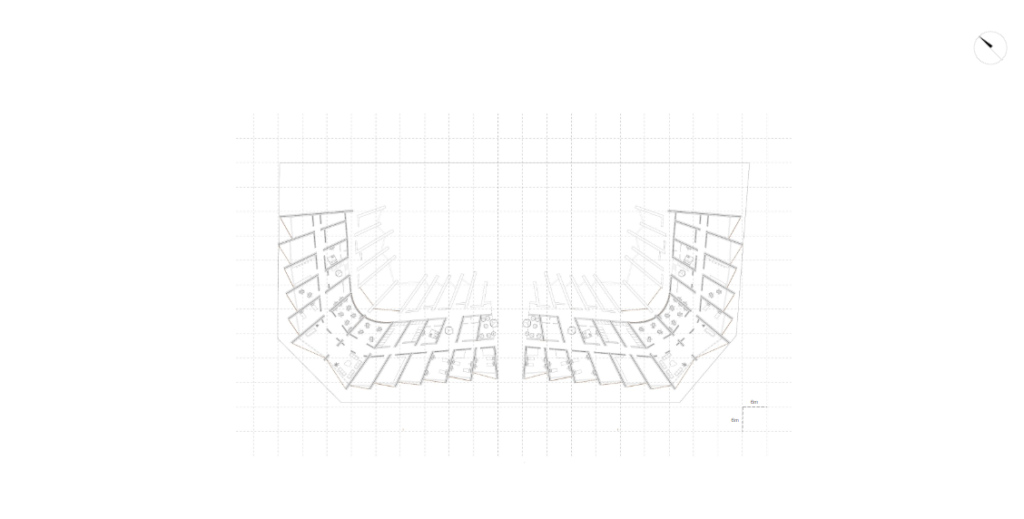
The first floor of the building will house all the shared housing units and common spaces such as shared kitchens. These spaces will have openings that face towards the landscape, providing a connection to the outdoors and creating an ambient environment for the residents. Additionally, the design of the first floor aims to promote social interaction and community building among the residents through the shared spaces. This floor will serve as a hub for communal activities and will be designed to facilitate socialization and collaboration. Overall, the first floor’s design aims to create a comfortable and welcoming living space that encourages a sense of community among the residents.
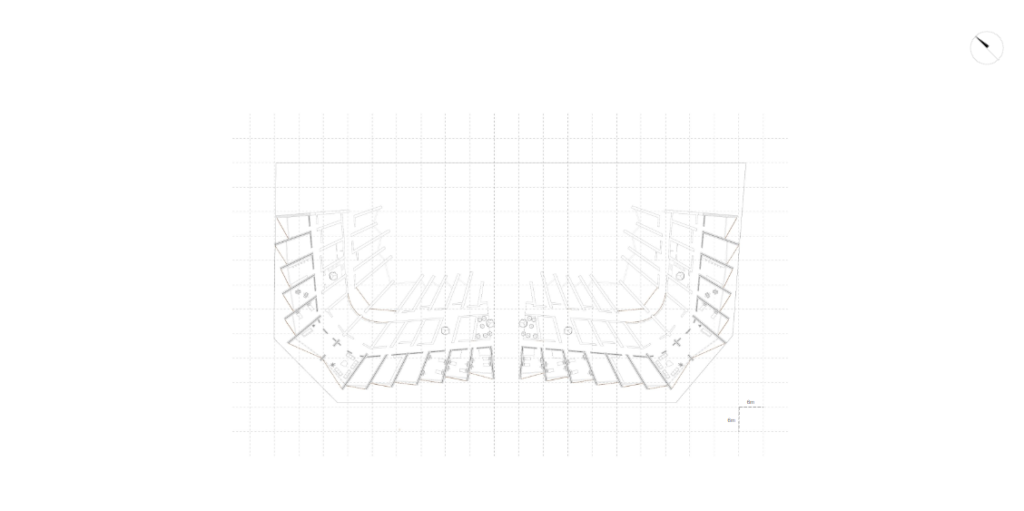
On the second floor of the building, there will be a cluster of premium solo suites (Cluster C). These suites will feature a double-height ceiling with mezzanine floors, which will optimize the vertical use of space. The design of these suites will provide a sense of spaciousness while also maximizing the functionality of the space. The mezzanine floors can be used for additional storage or as a sleeping area, while the main living area can be used for entertaining or relaxation. The premium solo suites are designed to cater to individuals who value both luxury and functionality in their living spaces. Overall, the design of the second floor aims to provide a unique and comfortable living experience for the residents of the building.
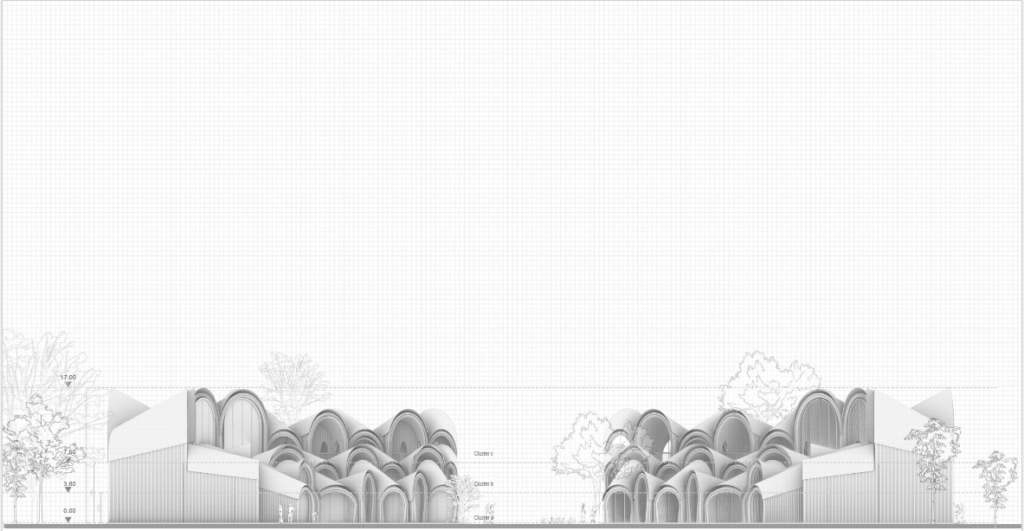
Elevation facing the central landscape
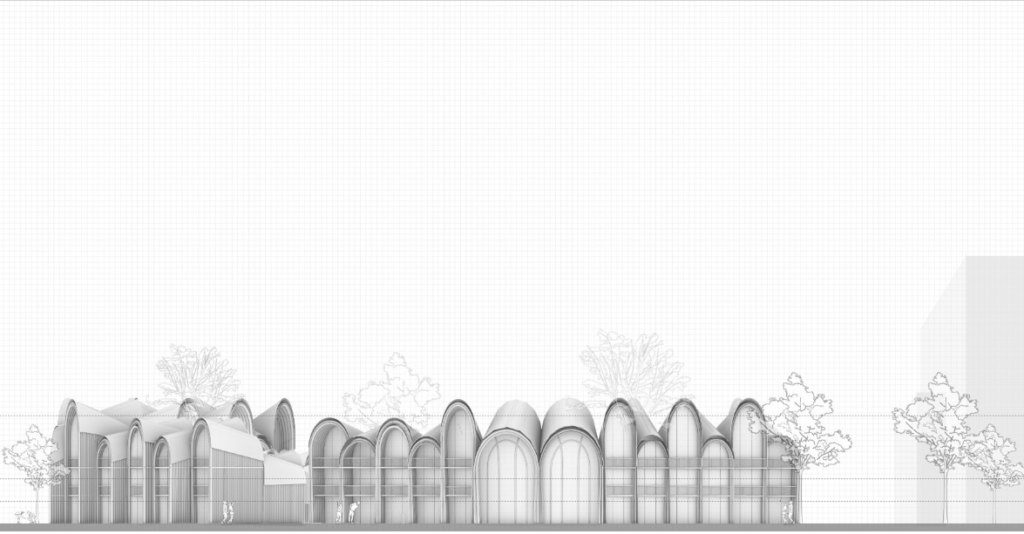
Elevation from the road side
The elevation of the building that faces the landscape showcases how the arches have been flipped to create openings that point towards the view of the surrounding landscape. The design of the building allows for a seamless connection between the interior and the exterior, with the central open circulation space serving as a link between the different parts of the building. The flipping of the arches creates a unique architectural feature that not only enhances the aesthetic appeal of the building but also maximizes the views of the surrounding landscape. Overall, the elevation design of the building aims to create a harmonious relationship between the interior and the exterior while also providing an aesthetically pleasing and functional space for the residents.
A View from the Central Landscape

The height of the building is 17 meters, and the three clusters of arches will have two different heights that share a common central wall. The design of the building takes into consideration the climatic conditions of the location to ensure maximum climate comfort for the residents.
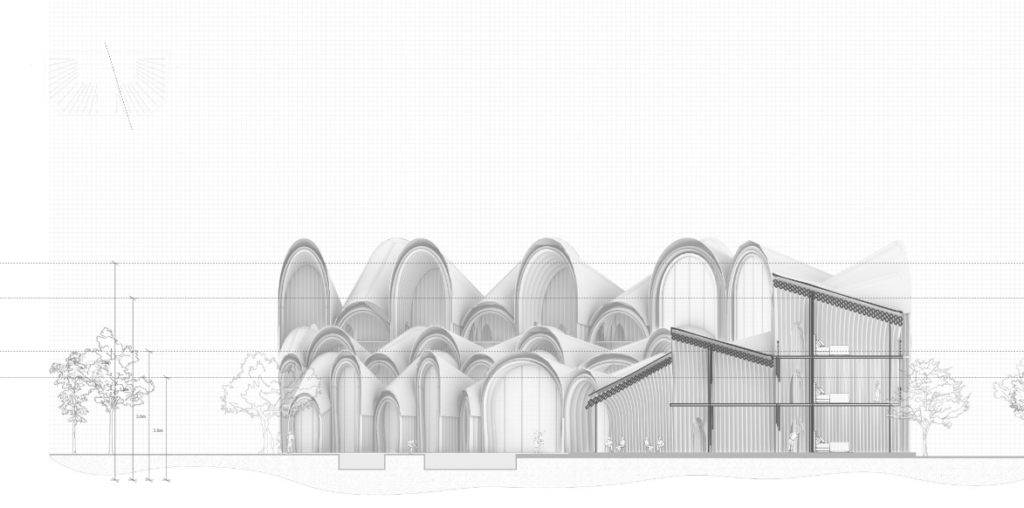
The variation in arch heights and the central wall act as natural ventilation systems that facilitate the circulation of air and regulate the temperature inside the building. This design feature ensures that the interior spaces are comfortable and habitable throughout the year, regardless of the external weather conditions. Overall, the design of the building aims to provide a comfortable and sustainable living space for the residents while also minimizing the building’s impact on the environment.
Interior View Recreation Room

